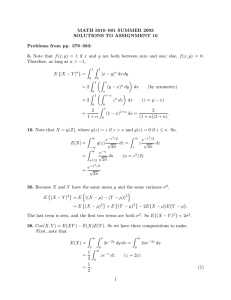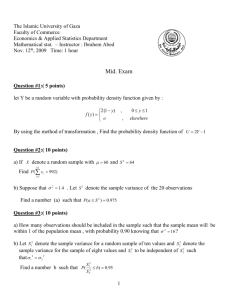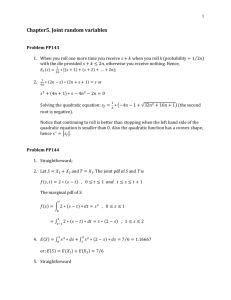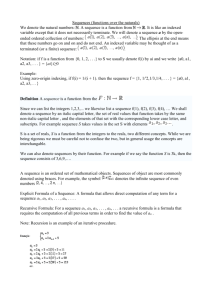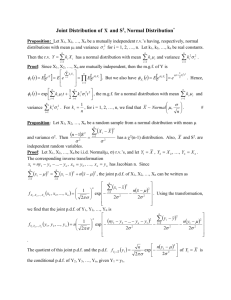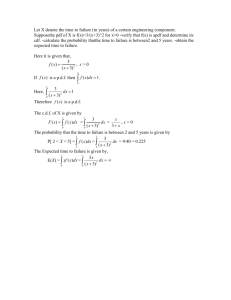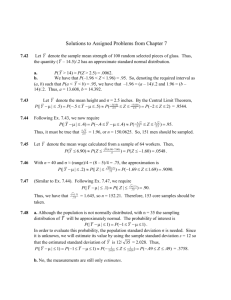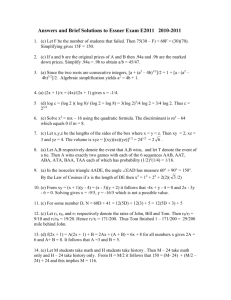MA351: Homework Assignment 2
advertisement
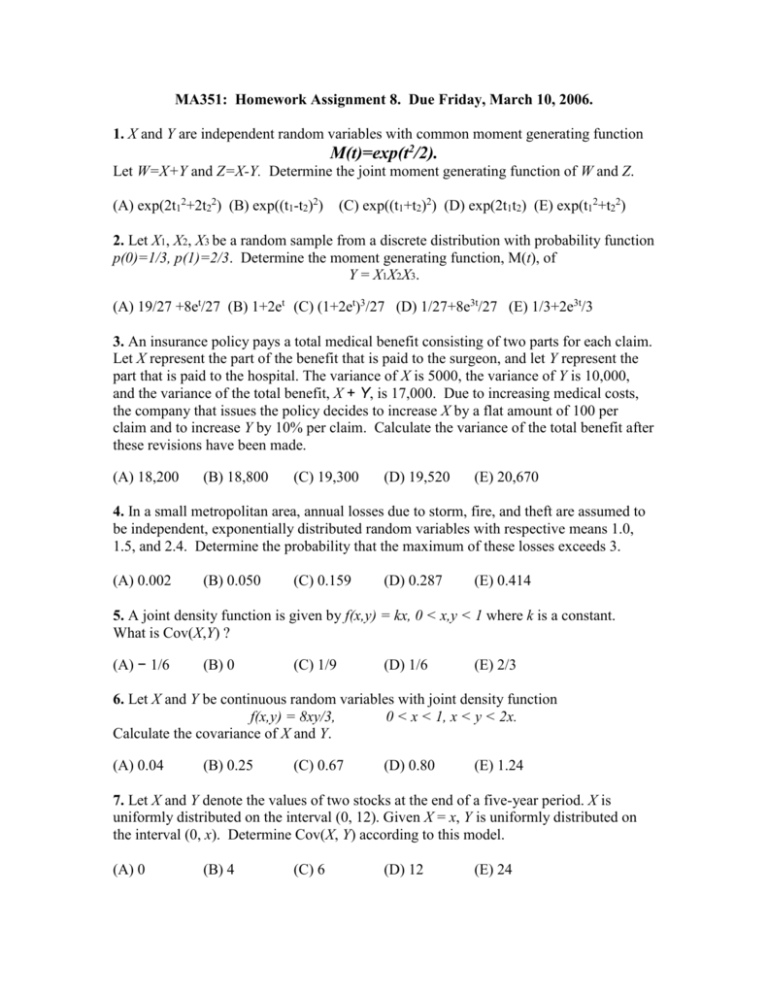
MA351: Homework Assignment 8. Due Friday, March 10, 2006. 1. X and Y are independent random variables with common moment generating function M(t)=exp(t2/2). Let W=X+Y and Z=X-Y. Determine the joint moment generating function of W and Z. (A) exp(2t12+2t22) (B) exp((t1-t2)2) (C) exp((t1+t2)2) (D) exp(2t1t2) (E) exp(t12+t22) 2. Let X1, X2, X3 be a random sample from a discrete distribution with probability function p(0)=1/3, p(1)=2/3. Determine the moment generating function, M(t), of Y = X1X2X3. (A) 19/27 +8et/27 (B) 1+2et (C) (1+2et)3/27 (D) 1/27+8e3t/27 (E) 1/3+2e3t/3 3. An insurance policy pays a total medical benefit consisting of two parts for each claim. Let X represent the part of the benefit that is paid to the surgeon, and let Y represent the part that is paid to the hospital. The variance of X is 5000, the variance of Y is 10,000, and the variance of the total benefit, X + Y, is 17,000. Due to increasing medical costs, the company that issues the policy decides to increase X by a flat amount of 100 per claim and to increase Y by 10% per claim. Calculate the variance of the total benefit after these revisions have been made. (A) 18,200 (B) 18,800 (C) 19,300 (D) 19,520 (E) 20,670 4. In a small metropolitan area, annual losses due to storm, fire, and theft are assumed to be independent, exponentially distributed random variables with respective means 1.0, 1.5, and 2.4. Determine the probability that the maximum of these losses exceeds 3. (A) 0.002 (B) 0.050 (C) 0.159 (D) 0.287 (E) 0.414 5. A joint density function is given by f(x,y) = kx, 0 < x,y < 1 where k is a constant. What is Cov(X,Y) ? (A) − 1/6 (B) 0 (C) 1/9 (D) 1/6 (E) 2/3 6. Let X and Y be continuous random variables with joint density function f(x,y) = 8xy/3, 0 < x < 1, x < y < 2x. Calculate the covariance of X and Y. (A) 0.04 (B) 0.25 (C) 0.67 (D) 0.80 (E) 1.24 7. Let X and Y denote the values of two stocks at the end of a five-year period. X is uniformly distributed on the interval (0, 12). Given X = x, Y is uniformly distributed on the interval (0, x). Determine Cov(X, Y) according to this model. (A) 0 (B) 4 (C) 6 (D) 12 (E) 24 8. Let X denote the size of a surgical claim and let Y denote the size of the associated hospital claim. An actuary is using a model in which E(X) = 5, E(X 2) = 27.4, E(Y) = 7, E(Y 2) = 51.4, and Var(X+Y) = 8. Let C1 = X+Y denote the size of the combined claims before the application of a 20% surcharge on the hospital portion of the claim, and let C2 denote the size of the combined claims after the application of that surcharge. Calculate Cov(C1, C2). (A) 8.80 (B) 9.60 (C) 9.76 (D) 11.52 (E) 12.32 9. A device containing two key components fails when, and only when, both components fail. The lifetimes, T1 and T2, of these components are independent with common density function f (t) = e−t, t > 0. The cost, X, of operating the device until failure is 2T1 + T2. Which of the following is the density function of X for x > 0? (A) e-x/2-e-x (B) 2(e-x/2-e-x) (C) x2e-x/2 (D) e-x/2/2 (E) e-x/3/3 10. A company offers earthquake insurance. Annual premiums are modeled by an exponential random variable with mean 2. Annual claims are modeled by an exponential random variable with mean 1. Premiums and claims are independent. Let X denote the ratio of claims to premiums. What is the density function of X? (A) 1/(2x+1) (B) 2/(2x+1)2 (C) e-x (D) 2e-2x (E) xe-x
